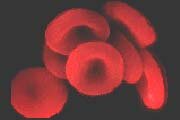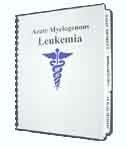 |
||
| HOME | ||
 |
||
| Acute Myelogenous Leukemia (AML) |
||
 |
||
| Other Leukemia Types (ALL / CLL / CML / HCL) |
||
 |
||
| Myelodysplastic Syndrome | ||
 |
||
| Symptoms and Diagnosis | ||
 |
||
| Leukemia Treatment Options | ||
 |
||
| " Chemotherapy | ||
 |
||
| " Blood Stem Cell Transplants | ||
 |
||
| " Radiation and Surgery | ||
 |
||
| " Chemo Side Effects | ||
 |
||
| " Clinical Trials Info | ||
 |
||
| " Coping with Leukemia | ||
 |
||
| " What to Ask Your Doctor | ||
 |
||
| Financial Assistance | ||
 |
||
| At Risk Jobs/Exposure | ||
 |
||
| Leukemia Resources | ||
 |
||
| Survivor's Story | ||
 |
||
| Leukemia News | ||
 |
||
|
Search for information:
|
||

|
Leukemia Cancer News - Return to Menu Research And Markets: Comprehensive Coverages of the R&D Trends To Set The Future Leukemia Marketplace To enable people to update their knowledge status at the same time receive a basic foundation, this report "Competition on the Future Leukemia Markets" describes and analyzes the latest year of progress in four different market segments; CLL, CML ALL and AML. In this report, we provide one of the most comprehensive coverages of the R&D trends to set the future leukemia marketplace. This report presents both an overview and a detailed description on the progress of key drugs in Phase III and II development, together with general descriptions of drugs and targets. There are 35 drug candidates identified in phase II or III stage of development. Among these drugs it can clearly be seen that there is substantial progress while others have failed. There will soon be a harder competition in several of the leukemic sub-markets and current treatments will be changed for the benefit of more innovative therapies. The information structure in this cancer highlight reports will as well provide an easy reading format to track B2B collaborations and industry academic relationships. Therapeutic candidates included in this analysis: AG-858, AP23573, Avastin, Atragen, BAY 43-9006, Bryostatin-1, Campath, Ceplene, CEP-701, Clofarabine, Cloretazine, Decitabine, FK228, Flavopiridol, Genasense, Gleevec, GVAX, Mylotarg, Multiferon, OSI-461, Phenoxodiol, pentostatin, PEG-Interferon, PKC412, PTK787, Revlimid, Rituxan, SU5416, SCH 54031, Sarasar, Triapine, Tezacitabine, Troxacitabine, Trisenox, valspodar, Velcade, Zamyl, Zarnestra, Xcytrin, XL999 For more information visit http://www.researchandmarkets.com/reports/c8478 Laura Wood Plant Derivative Kills Leukemia Cells "This research is a very important step in setting the stage for future development of a new therapy for leukemia," senior author Dr. Craig T. Jordan, from the University of Rochester School of Medicine in New York, said in a statement. "We have proof that we can kill leukemia stem cells with this type of agent, and that is good news." The findings, which appear in the medical journal Blood, are based on lab dish experiments looking into parthenolide's destructive effects. The chemical showed a strong ability to trigger the death of human AML cells as well as chronic myelogenous leukemia (CML) cells. In fact, this agent was found to be much more specific to leukemia cells than the standard chemotherapy drug Ara-C. Further analysis revealed that parthenolide selectively targets stem cell populations. Thus, the investigators conclude that parthenolide is representative of "a potentially important new class of drugs for leukemia stem cell targeted therapy." Victories cap recovery for Chagrin Falls girl Emily, 13, rode Katherine Fitzgerald's Bethoven to the championship title in the Limit Rider division, then returned to the ring on her own horse, It's About Time, to win the Novice Rider championship. She finished her successful day by taking first place in the Novice Equitation class, in which the rider's horsemanship is judged. For Emily and her family, the victories held special significance. A year ago at this time she'd been hospitalized at the Cleveland Clinic for more than four months battling AML leukemia, a particularly deadly type of the disease for which remission is rare, her mother, Gail, said. Family appeals for bone marrow donation THATO CHWAANE Speaking to Mmegi yesterday, Motswedi Nyoka said that his ailing daughter was diagnosed with Acute Myeloid Leukemia (AML) in 2003 and is in need of a bone marrow transplant. He said the 20-year-old Lotsane student would be going for chemotherapy in Johannesburg, South Africa today. He asserted that chemotherapy is not a cure. Although Kabelo was treated two years ago, the disease resurfaced after 12 months of remission and doctors have advised that the transplant is the only alternative. Nyoka said Kabelo was a normal child until she was diagnosed with the condition at 18. The disease has delayed her academic progress. She is presently doing Form Five and she may be forced to drop from school for another year. Nyoka said that AML is caused by exposure to high chemicals or it can come from the genes. AML affects various white blood cells including granulocytes, monocytes and platelets. The leukemic cells accumulate in the bone marrow, replace normal blood cells and spread to the liver, spleen, lymph nodes, central nervous system, kidneys and gonads. The St. Jude Childrens Research Hospital says there is a greater incidence of leukaemia among people exposed to large amounts of radiation and certain chemicals, for example benzene. The family can be contacted at +267 - 4922698, 72234658 and 72649760. Household insecticides may cause leukemia January 27, 2006 - ISLAMABAD: Household insecticides may increase the risk of leukemia, says a new study, reinforcing the theory that pesticide exposure may play a role in childhood acute leukemia. Florence Menegaux and other researchers of Inserm Medical Research Institute in France studied 568 children, half of whom had acute leukemia. They asked them about employment history of both parents and the use of insecticides in their homes and gardens. They found use of home insecticides during pregnancy and childhood increased the risk of leukemia by nearly twice, reported the online edition of BBC News. A similar risk was also seen for the use of insecticidal shampoo to treat head lice. Use of garden insecticides was linked to a 2.4-fold increase in risk and fungicide to a 2.5-fold increase, the researchers say. It was still not possible to say for definite that insecticide use caused leukemia and it was unclear what agent in it was potentially dangerous, Menegaux said. She added: "The consistency of our results and the results from previous studies suggests that it may be opportune to consider preventative action."
|
|
|


